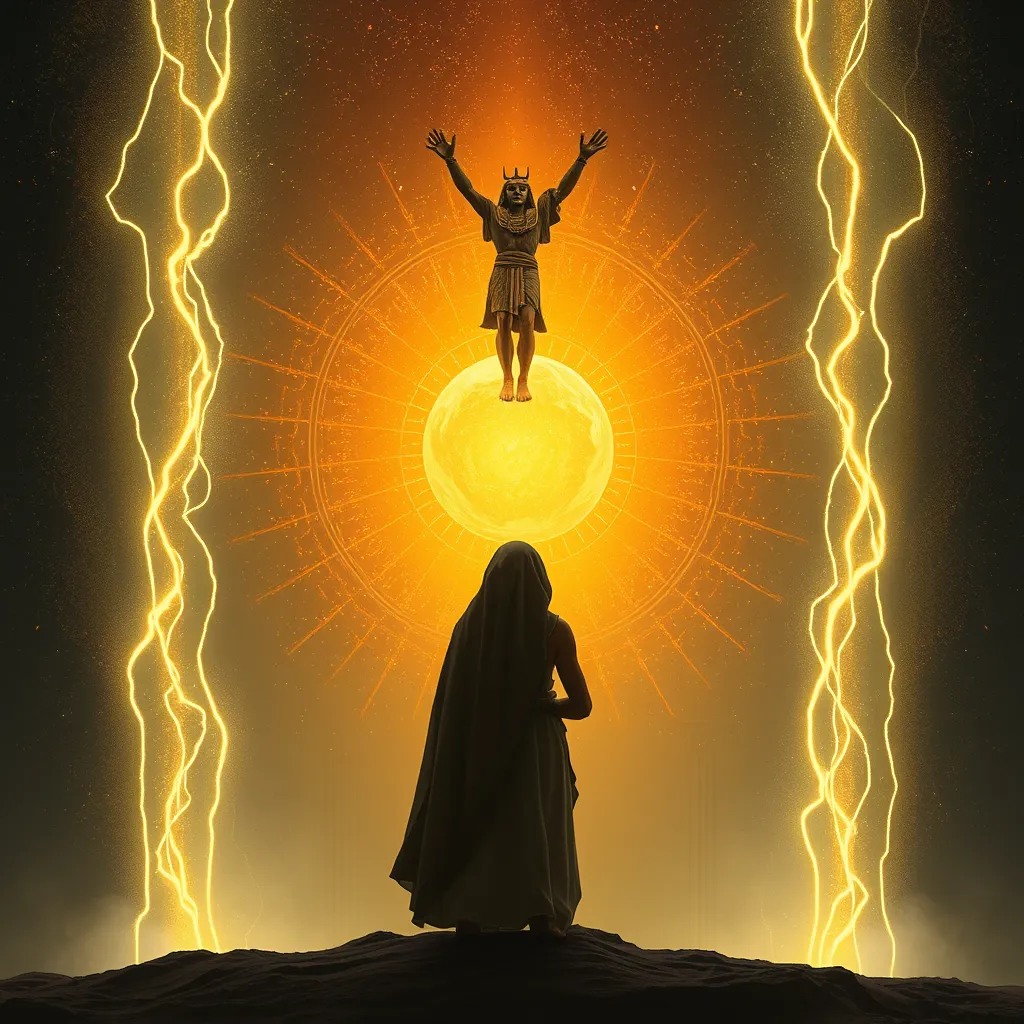The Duat: Beyond the Veil of Reality
I. Introduction to the Duat
The Duat is an essential concept in ancient Egyptian mythology, representing a complex and multifaceted realm situated beyond the physical world. It is often described as the afterlife or the underworld, a domain where the souls of the deceased journey after death. The significance of the Duat lies not only in its role as a place of judgment and rebirth but also as a symbol of the eternal cycle of life, death, and resurrection.
This article aims to explore the various aspects of the Duat, delving into its historical context, geographical features, mythological figures, and its profound symbolism and themes. By understanding the Duat, we gain insight into the ancient Egyptians’ beliefs about life after death and the moral lessons they imparted through their myths.
II. Historical Context of the Duat
The concept of the Duat has its origins in ancient Egyptian religion, dating back to the early dynastic period. Initially, it was a somewhat nebulous idea, gradually evolving into a more defined and structured belief system over centuries.
Some key elements of the historical context include:
- Origins: The Duat was likely influenced by earlier burial practices and beliefs surrounding the afterlife.
- Evolution: Over time, the Duat came to be associated with specific deities and rituals, reflecting changes in religious practices.
- Key Texts: Important texts such as the “Book of the Dead” and the “Pyramid Texts” contain references to the Duat, detailing the journey of the soul and the challenges it faces.
III. The Geography of the Duat
The Duat is often depicted as a vast and intricate landscape, filled with various features that hold symbolic meanings. This otherworldly realm is portrayed as a place of both beauty and danger, reflecting the dual nature of existence.
Key locations within the Duat include:
- The Hall of Ma’at: A central location where the deceased undergo the critical “Weighing of the Heart” ceremony.
- The Lake of Fire: A place of punishment for the wicked, symbolizing the consequences of one’s actions in life.
- Pillars of the Duat: Representing the boundary between the living world and the realm of the dead.
The journey of the deceased through the Duat is crucial, as it symbolizes the transition from life to afterlife and the trials one must face to achieve eternal life.
IV. Mythological Figures of the Duat
The Duat is inhabited by several deities and mythological figures, each playing a significant role in the journey of the soul. Among the most notable are:
- Osiris: The god of the afterlife, who presides over the dead and symbolizes resurrection and regeneration.
- Anubis: The jackal-headed god who serves as the guide of souls, overseeing the mummification process and the journey through the Duat.
- Other Deities: Various spirits and gods, such as Thoth, who represents wisdom and writing, and Sekhmet, who embodies the fierce aspects of divine protection.
These figures illustrate the rich tapestry of beliefs surrounding the afterlife and the importance of divine assistance in navigating the challenges of the Duat.
V. The Journey Through the Duat
The journey through the Duat is fraught with trials and tribulations that the soul must navigate to achieve eternal life. This journey is not only a physical passage but also a spiritual transformation.
Key elements of this journey include:
- Trials: Souls face various obstacles and monsters, testing their worthiness and resolve.
- Weighing of the Heart: A pivotal ceremony where the heart of the deceased is weighed against the feather of Ma’at to determine their moral integrity.
- Ultimate Goal: The soul aims to achieve rebirth and reunite with the divine, symbolizing the eternal cycle of life.
Success in this journey signifies not only personal redemption but also the continuation of life in a transformed state.
VI. Symbolism and Themes in the Duat
The Duat is rich with symbolism and themes that reflect the ancient Egyptians’ views on existence, morality, and the afterlife.
Some prominent themes include:
- Death and Rebirth: The Duat represents the cyclical nature of life, emphasizing the idea that death is not an end but a transition.
- Light and Darkness: The interplay of light and darkness symbolizes the duality of existence, with the Duat embodying both the fears and hopes associated with death.
- Moral Teachings: The narratives surrounding the Duat impart lessons about ethics, justice, and the consequences of one’s actions in life.
These themes resonate deeply with the human experience and continue to inspire reflection on our own beliefs about life and death.
VII. The Duat in Modern Interpretations
The Duat’s influence extends beyond ancient texts and rituals, permeating modern literature, art, and popular culture. Its rich symbolism and profound themes resonate with contemporary audiences.
Modern interpretations include:
- Literature: The Duat has inspired countless works of fiction, exploring themes of mortality and the afterlife.
- Art: Artists draw upon the imagery of the Duat to depict the mysteries of existence and the human condition.
- Spirituality: Contemporary spiritual movements often reference the Duat in discussions of life after death and personal transformation.
The relevance of the Duat in modern discussions highlights its enduring legacy and the universal quest for understanding life beyond the physical realm.
VIII. Conclusion
In summary, the Duat holds a significant place in ancient Egyptian mythology, representing a complex interplay of life, death, and rebirth. Its rich history, geographical features, and mythological figures provide a profound insight into the beliefs of a civilization that sought to understand the mysteries of existence.
The intersection of myth and reality within the Duat invites us to reflect on our own beliefs about the afterlife and the moral lessons we carry through our lives. As we ponder the mysteries that lie beyond the veil of reality, the Duat serves as a timeless reminder of the enduring human quest for meaning and understanding in the face of the unknown.





